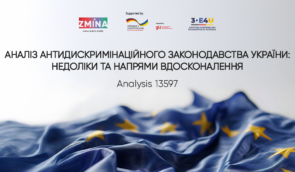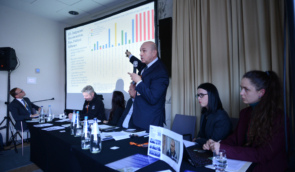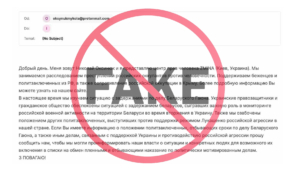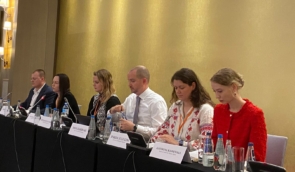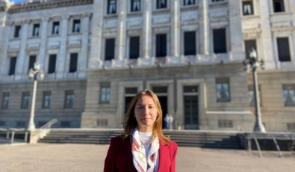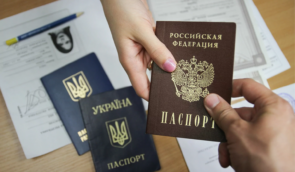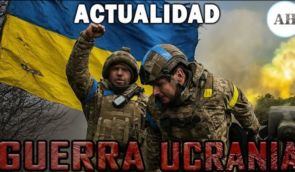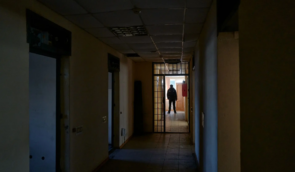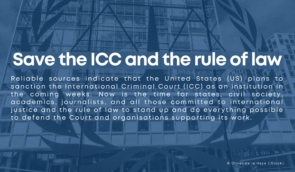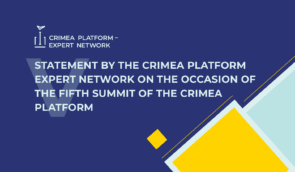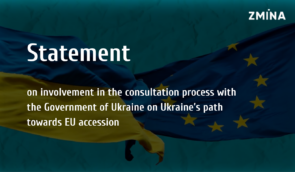Torture in occupied territories of Ukraine: ZMINA presents report and testimonies of victims at OSCE
On April 24, within the framework of the second Supplementary Human Dimension Meeting, Human Rights Centre ZMINA together with Media Initiative for Human Rights, World Organisation Against Torture (OMCT), and Human Rights House Foundation held a side event on the topic: “Tortures in the occupied territories of Ukraine as crimes against humanity and war crimes: analysis and survivors’ testimonies”.
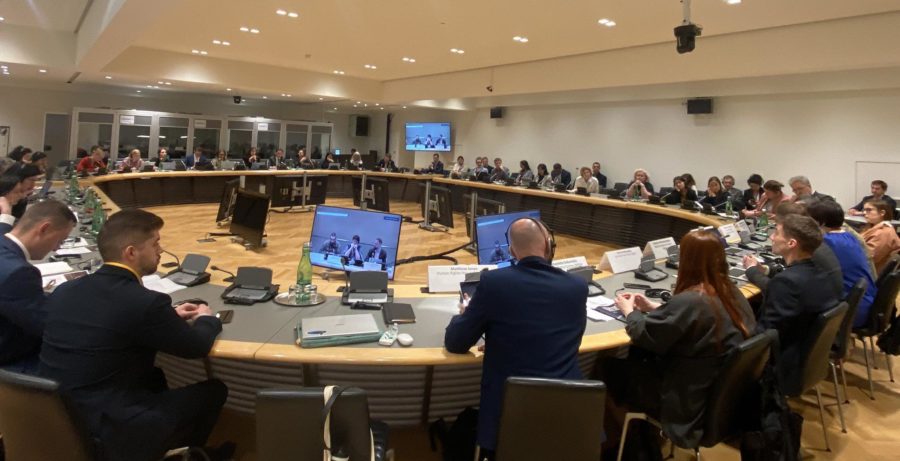 Photo: Human Righst Centre ZMINA
Photo: Human Righst Centre ZMINADuring the event, Yelyzaveta Sokurenko, coordinator of the war crime documentation department at the Human Rights Centre ZMINA, noted that the Russian military systematically subjects Ukrainian civilians to torture and ill-treatment. Thus, in particular, the occupiers try to identify citizens disloyal to the occupation and suppress civil resistance.
According to Sokurenko, the organization conducted 57 in-depth interviews with victims and witnesses of torture and documented more than 400 reports of such cases from open sources.
“Our analysis showed that the methods and circumstances of torture, as well as intentionally created inhumane conditions of detention, are the same for different regions of Ukraine, in particular, Kharkiv, Kherson, Zaporizhzhia, and Donetsk regions, many settlements of which were (or still are) under long-term occupation. This allowed the Russians to widely deploy a system of illegal places of detention and torture of people,” said the representative of the Human Rights Centre ZMINA.
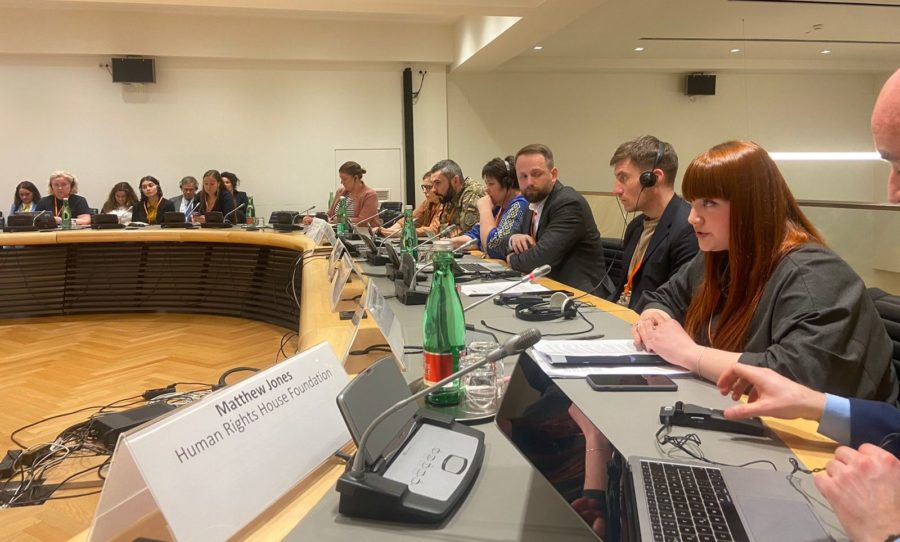 Photo: Human Righst Centre ZMINA
Photo: Human Righst Centre ZMINAShe added that people were unlawfully held in detention facilities, both spontaneous and centralized, for several days to several months:
“They were interrogated during detention. 83% of torture survivors reported that they experienced the most brutal forms of torture during such interrogations. 63% said that they were tortured with electric shocks, 81% of people reported ‘professional’ beatings, and 70% reported torture with hunger. Victims also suffered greatly due to psychological abuse, insults, and threats.”
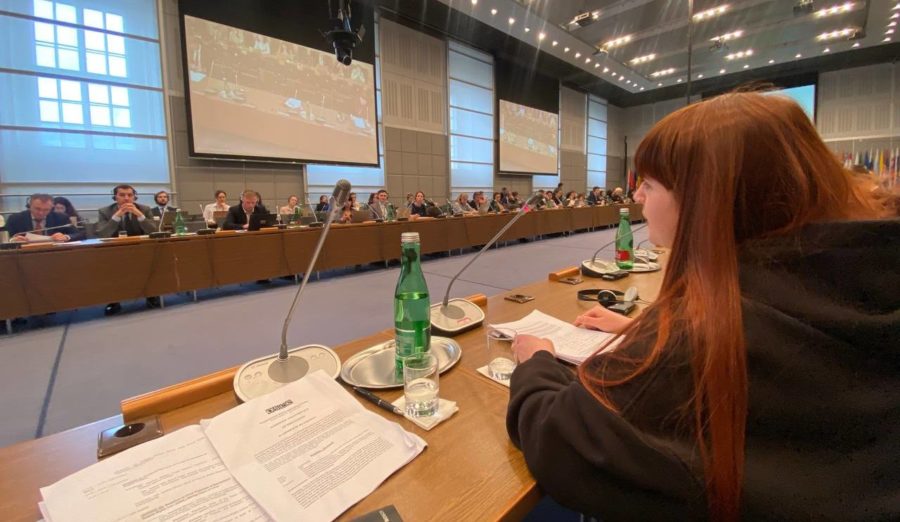 Yelyzaveta Sokurenko / Photo: Human Righst Centre ZMINA
Yelyzaveta Sokurenko / Photo: Human Righst Centre ZMINASerhiy Pohorielov, a victim from the village of Kopyliv, Kyiv region, said that the Russians detained him when he went outside to check the condition of his friends’ houses. The military found screenshots of a map of the area in his phone and accused him of spotting the fire. Then Pohorielov was severely beaten and put in a wooden chest in the street. For four days, the man was kept in the chest almost around the clock. At the same time, the occupiers “expressed the hope that a Ukrainian projectile would hit it.”
The victim was also used as a “human shield”:
“We were put on the roof of an armored vehicle and they started to drive. On the other side of a highway, there was a checkpoint of the Ukrainian military guarding the territory. A Russian army colonel ordered his subordinates – a sniper, a grenade launcher operator, and a machine gunner – to open fire on our troops. A firefight began, explosions, bullets ricocheted off the asphalt, building nearbys, it lasted 10-15 minutes. But our military heroically repelled their attack. The Russian military thanked us for acting as their ‘human shield’.”
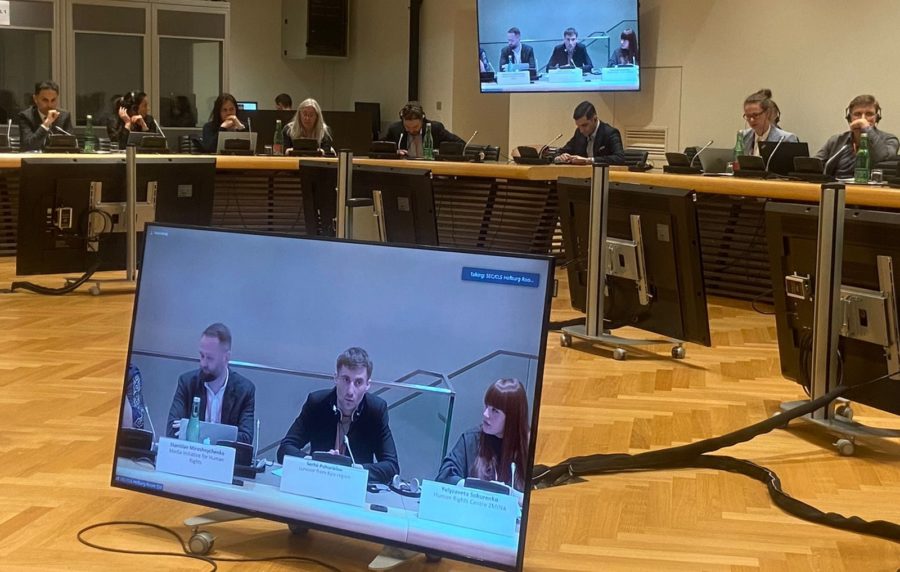 Serhiy Pohorielov / Photo: Human Righst Centre ZMINA
Serhiy Pohorielov / Photo: Human Righst Centre ZMINAOksana Zayaryna, a resident of Berdiansk, Zaporizhzhia region, also shared her story. The occupiers took the woman from her house and brought her to the so-called “commandant’s office” where she was tortured with electric shocks. Zayaryna was accused of helping the Armed Forces of Ukraine and allegedly being recruited by the Security Service of Ukraine and the Main Directorate of Intelligence:
“When I said that I had no links with our military, they started threatening that I would confess when they started beating my husband. They told me that if I didn’t confess, I would be taken to the so-called ‘DPR’ where I would be sentenced to 20 years, no one would find me, and they were beating the wall with their fists next to my head and face. After that, they tied my legs with wires from a device that gives current and turned it on so that I would confess everything. They made electric current more or less intensive. Then they gave me a day to think about everything and confess all the links. Seven days later, they took our fingerprints, DNA samples, and photos and entered them into a database, and then they transferred us to another place of detention – ITK-77. I stayed there for 78 days. I was no longer physically tortured, but it was very difficult emotionally as I heard how people were tortured 24/7.”
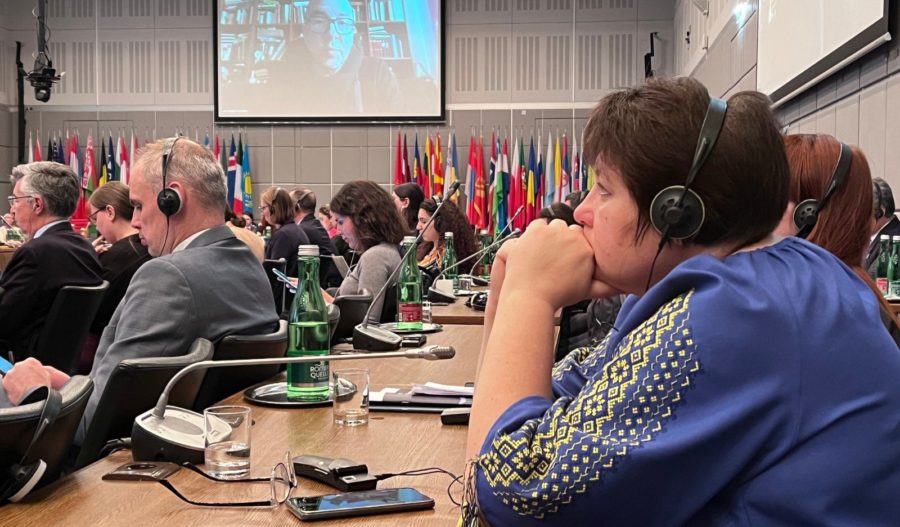 Oksana Zayaryna / Photo: Media Initiative for Human Rights
Oksana Zayaryna / Photo: Media Initiative for Human RightsRussian armed forces also subject Ukrainian prisoners of war to torture systematically. This was noted by Stanislav Miroshnychenko, a representative of the Media Initiative for Human Rights.
He said that since the beginning of Russia’s full-scale invasion of Ukraine, the number of testimonies about the torture of prisoners of war, which the organization receives, is growing exponentially. Almost every Ukrainian soldier in captivity is subjected to torture:
“We have testimonies about the rape of female prisoners of war. A special type of psychological torture against women is when their hair is shaved off. Women take a shower in the presence of male guards. We also have evidence when prisoners of war held in the Donetsk pre-trial detention center, women and men, were stripped naked, bags were put on their heads and they were led naked along the streets of Donetsk to a bathhouse. I would like to point out that Russia holds captive soldiers with severe injuries and amputated limbs. These people must be released unconditionally. However, this is not happening.”
As Miroshnychenko noted, the MIHR prepares a list of prisoners of war who have serious injuries and illnesses to hand it over to the International Committee of the Red Cross soon. The organization will demand that the ICRC visit these prisoners, confirm their place of detention, and secure their release.
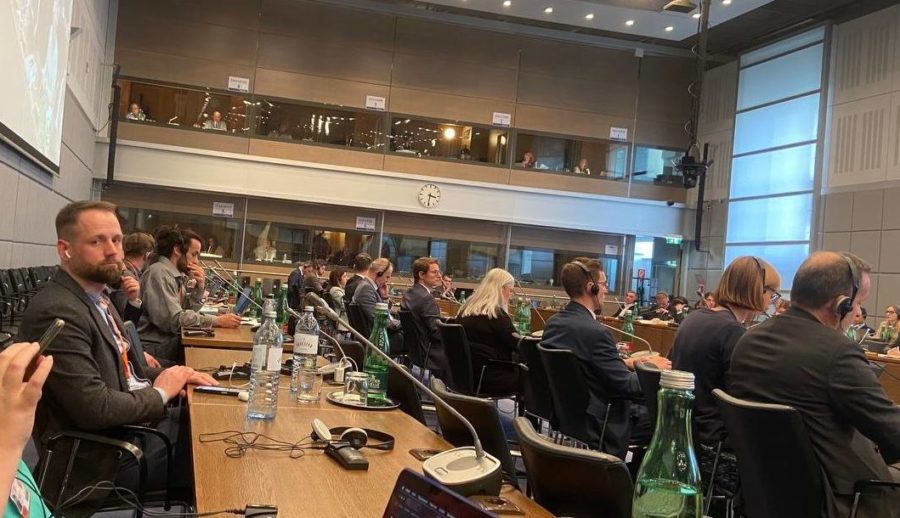 Stanislav Miroshnychenko / Photo: Human Rights Centre ZMINA
Stanislav Miroshnychenko / Photo: Human Rights Centre ZMINAUkrainian serviceman Maksym Kolesnikov, who spent more than 10 months in captivity, said that he and his fellow prisoners were beaten daily during the first five months of detention:
“We were beaten with hands, feet, rubber batons, plastic pipes, metal rulers on the palms, ropes with knots. We got shocked with electric shock weapons of various types. We were beaten clothed and naked, we were beaten in a cell, in a corridor, in a shower, in a prison yard. We were forced to do 200-300 sit-ups, and then 100 push-ups. And those who couldn’t were got shocked to, as they said, ‘recharge’. Some of us were bitten by dogs, some were shot in the hands with a gun during interrogations.”
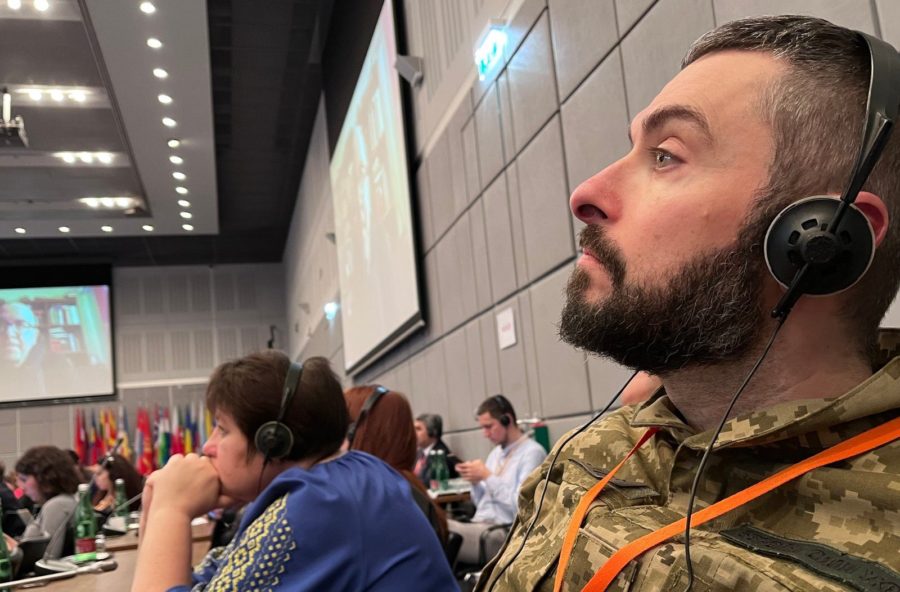 Maksym Kolesnikov / Photo: Media Initiative for Human Rights
Maksym Kolesnikov / Photo: Media Initiative for Human RightsYevhenia Andreyuk, expert of the World Organisation Against Torture, concluded that the actions resorted to by Russia are not only war crimes but also contain signs of crimes against humanity. Andreyuk called on the international community to put pressure on Russia so that, first, it publishes a list of all persons unlawfully detained by it, including civilians:
“Many relatives still do not know where their relatives are, there is still no information about many people. Therefore, we ask all OSCE participating States to put pressure as much as possible and use diplomatic channels to disseminate information about detainees. Second, we ask everyone to seek access to detainees and prisoners of war held in Russia.”
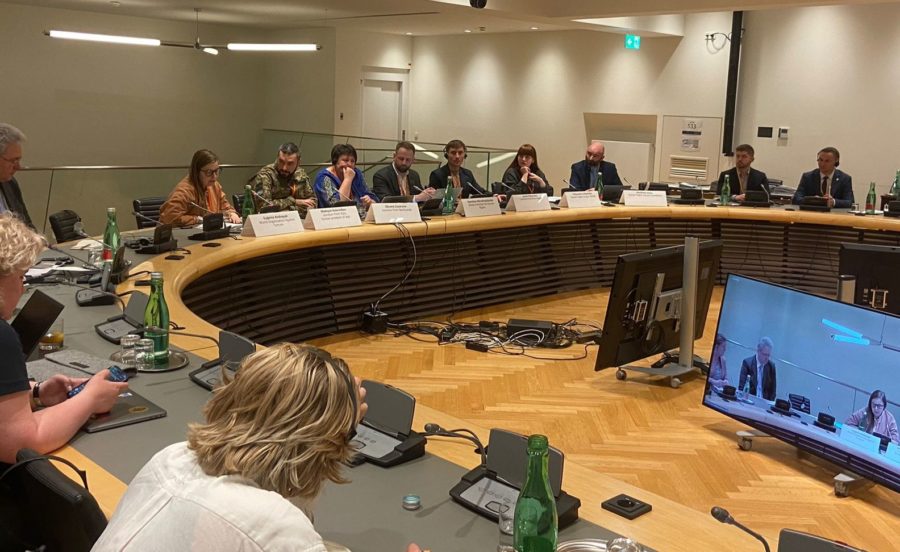 Photo: Human Rights Centre ZMINA
Photo: Human Rights Centre ZMINAEarlier, Human Rights Centre ZMINA in cooperation with Media Initiative for Human Rights and World Organization Against Torture (OMCT) made a joint submission to the Universal Periodic Review of Russia. Its topic “Torture and other forms of ill-treatment committed in the context of armed conflict by the representatives of the Russian Federation in the territory of Ukraine” was broadly analyzed and researched throughout activities of organizations in documenting torture and enforced disappearances, in particular within the framework of Ukraine 5 AM Coalition.
If you have found a spelling error, please, notify us by selecting that text and pressing Ctrl+Enter.

